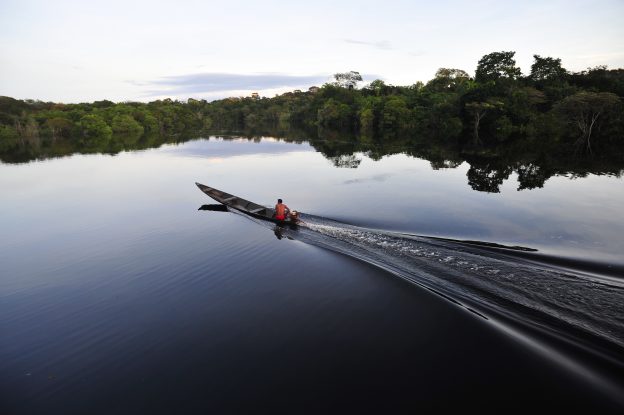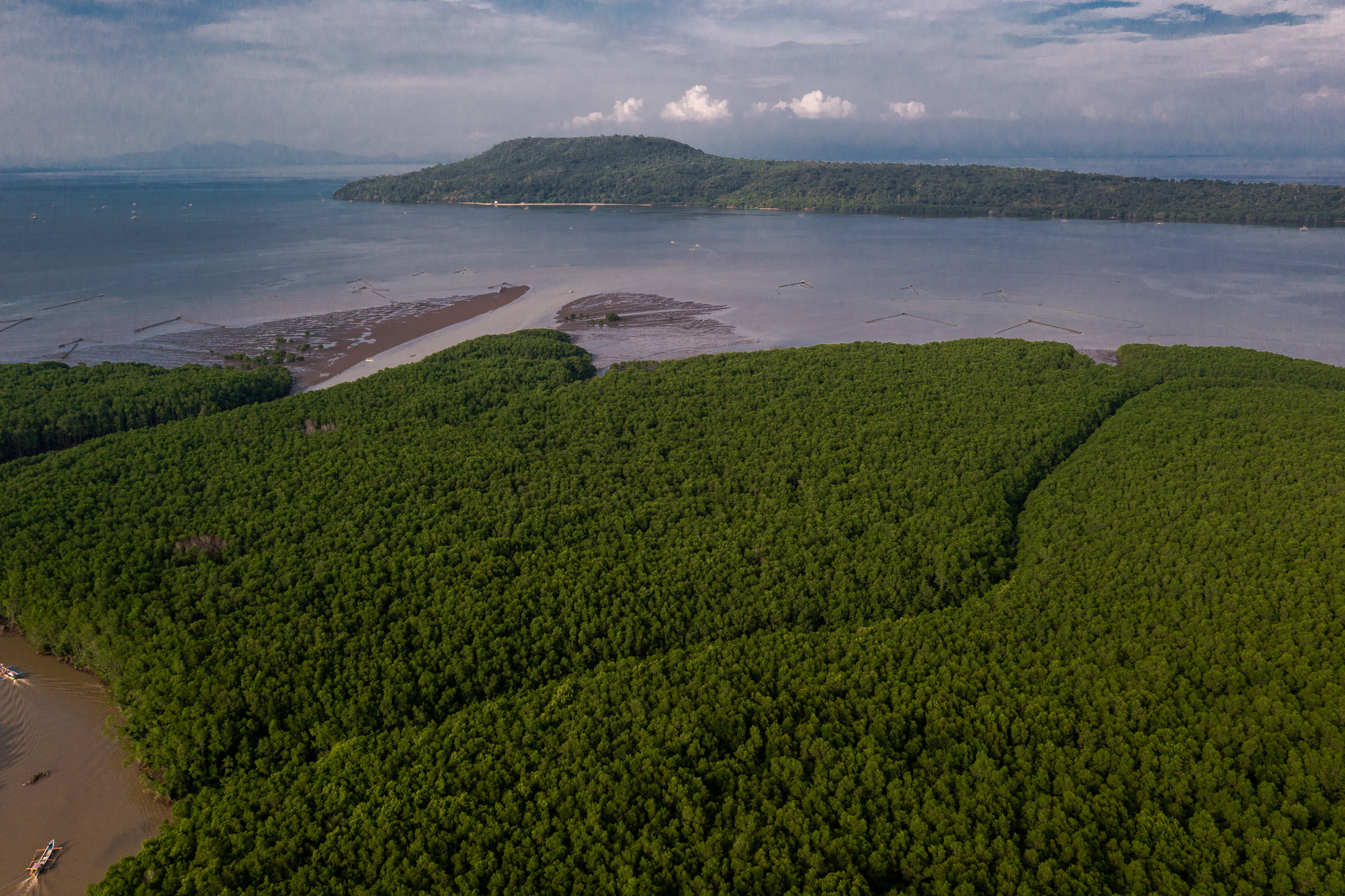As the global community gears up for COP30 in Belém, all eyes are on the host’s flagship proposal: the Tropical Forest Finance Facility (TFFF) – a Brazilian-led initiative that could redefine climate finance. It promises a USD 125 billion blended-finance investment designed to tackle tropical deforestation once and for all.
Its central premise is both simple and revolutionary: to pay eligible countries for “payment-for-performance”. The most-quoted figure is about USD 4 per hectare per year for every hectare of standing tropical forest.
This has, understandably, drawn scepticism. Critics ask the obvious: How can four dollars possibly stop a bulldozer?
When the land’s alternative uses are considered, the figure look not just insufficient, but economically absurd. In Indonesia, the net present value (NPV) of a single hectare converted to a palm oil plantation can exceed USD 10,000. In Brazil, soybean cultivation offers profit advantages over USD 300 per hectare annually.
No profit-seeking corporation or land speculator will be deterred by a four-dollar incentive. On a purely microeconomic level, the TFFF payment is irrelevant.
So, is the USD 125 billion fund destined to fail? Or, as many fear, will it end up paying for “inframarginal” forests – those vast, inaccessible jungles that
were never at risk of being cut down anyway?
The answer to the second question is yes – and that is precisely the point.
The TFFF is not a traditional payment for ecosystem services (PES) scheme. It is a new and deeply misunderstood instrument of climate diplomacy. Its power lies not in the USD 4 “carrot”, but in the multi-billion-dollar “stick.”
Cattle graze on cleared pastureland near Rio Branco, Acre, Brazil. Expanding cattle farming remains one of the leading drivers of deforestation in the Amazon, transforming once-forested landscapes into grazing areas..
Photo by Kate Evans / CIFOR-ICRAF
A critical caveat: The financial arbitrage
Before going further, it’s important to grasp the high-stakes financial engine driving the TFFF. This isn’t a typical aid fund; it’s a USD 125 billion blended-finance endowment.
Its mechanism is essentially a global-scale arbitrage play. The plan is to raise an initial USD 25 billion in “sponsor” capital from donor nations at very low interest rates, comparable to a U.S. Treasury bond (below 5 percent). This public money acts as a junior safety net to de-risk the investment, enabling the fund to attract a further USD 100 billion from private investors.
Here’s the key: that entire USD 125 billion pool is not spent. It is invested in a portfolio of higher-yield assets, such as fixed-income emerging market and sovereign bonds (excluding fossil fuels).
The USD 3-4 billion in annual payments is generated from the spread – the profit between the low 5 percent (or less) cost of borrowed capital and the higher return ( 7-8 percent) expected from emerging-market investments.
And here lies the crucial caveat: the TFFF’s ability to pay anyone anything at all depends entirely on this investment portfolio’s performance. If a global financial crisis or emerging-market downturn erases that spread, the conversation payments could vanish with it. It’s a model built on financial risk to solve an environmental one.
The real mechanism: A “performance bond” for nations
The TFFF’s brilliance – and its biggest gamble – lies in its eligibility criteria. This is not a project-based fund. The billions of dollars in predictable, annual returns will be paid directly into national budgets.
But to get this money, two conditions are critical:
- The cap: to join, a country must have a national deforestation ratebelow 0.5%.
- The penalty: once in, payments are slashed for any deforestation, with proposed penalties of 100–200 times the payment for each hectare lost.
This design helps solve two chronic issues in previous schemes: “leakage” and “additionality” – leakage is when protecting one forest (Project A) simply pushes the loggers to the next valley over (Project B). Because the TFFF operates at a national scale, there’s nowhere to hide – deforestation in Pará or Amazonas counts as Brazilian deforestation.
More importantly, it also weaponizes the so-called “inframarginality problem” (paying for safe forests). Yes, the TFFF will pay for forests that were never under threat – it must. That’s how the math works. By paying USD 4 for all 160 million hectares of forests in the Democratic Republic of Congo (DRC), you create a potential USD 640 million annual prize.
The idea is that the threat of losing that USD 640 million sovereign-level payment is a “stick” powerful enough to compel the governmentin Kinshasa to create and, crucially, enforce its own laws to stop the “additional” deforestation happening at the frontier.
The TFFF doesn’t pay the farmer not to cut; it finances the state’s political will to police itself. How this plays out will be dramatically different in the world’s three great forest basins.

Photo by Marlon del Aguila Guerrero / CIFOR-ICRAF

Photo by Aulia Erlangga / CIFOR-ICRAF
Case 1: Brazil – the reward & the hedge
The TFFF is tailor-made for Brazil. Under the Lula administration, deforestation has already plummeted by 11 percent in the past year, driven by renewed political will and strong enforcement.
Here, the USD 4/ha payment is meaningless to the actual drivers:
- Agribusiness: soy profits are over USD 300/ha.
- Land Speculation: cattle ranching itself is barely profitable (a net cash flow of ~USD 50/ha), but it’s a tool. The real business is clearing land to “claim” it, as pasture land values appreciated 61% and cropland 128% in just three years (2019-2022). A USD 4/ha payment is a rounding error on an asset appreciating by $1,000/ha in a year.
The TFFF isn’t for the farmer; it’s for the finance minister. For Brazil, the TFFF is a fiscal reward for its policy success – turning conservation from a cost into a (conditional) revenue stream and providing a hedge against political backsliding.
Case 2: Indonesia – the political calculus
Indonesia presents a harder test. After years of decline, deforestation is rising again – and 97 percent of it occurs within legal concessions. This is not an enforcement failure; it’s policy. The state is permitting the clearing.
Economic drivers are juggernauts:
- Palm oil: with an NPV of up to USD 10,670/ha, this industry is an economic colossus. A 1-million-hectare “Sulawesi Palm Oil Belt” is already being proposed.
- Pulp and paper: a USD 7.5 billion export industry built on vast concessions.
- Aquaculture: converting mangroves to shrimp ponds yields a net benefit of USD 3,000/ha.
Again, the $4/ha payment is economically meaningless to the corporations. But its power is to change the state’s political calculus.
With 94 million hectares of natural forest, Indonesia would be eligible for a TFFF payment of over $376 million per year. The TFFF forces a new cost-benefit analysis in Jakarta: Is the tax revenue and political capital from approving that new 1-million-hectare palm oil concession worth losing $376 million in predictable, free-and-clear budget support, every single year?
The TFFF doesn’t try to outbid the palm oil company. It tries to pay the government more (or at least, more reliably) to stop itself from issuing the permit.
Aerial view showing forest loss near Lieki, Democratic Republic of the Congo, where cleared land stands in stark contrast to remaining dense tropical forest, illustrating the scale and impact of deforestation.
Photo by Axel Fassio / CIFOR-ICRAF
Case 3: Democratic Republic of Congo – the high-risk gamble
The DRC is where the TFFF model faces its hardest test. Deforestation reached 1.2 million ha in 2024, driven not by commodities but by poverty and survival.
Deforestation is driven by:
- Subsistence agriculture: 80 percent of the population relies on small-scale, slash-and-burn farming.
- Fuelwood and charcoal: domestic energy needs continue to accelerate forest loss.
Here, the USD 4/ha payment mechanism is completely misaligned with these on-the-ground drivers. A subsistence farmer clearing land to feed their family is not a profit-maximizing actor. The TFFF payment, a potential USD 640 million, will be channelled to the national budget in Kinshasa. In the DRC, the TFFF is not a conservation payment; it is performance-based contingent budget support.
Its success is a 100% gamble on governance. Can the state use that massive windfall to solve the root drivers—investing in agricultural intensification to improve food security and funding energy alternatives to charcoal? Or will the funds be lost to the “poor governance and corruption” that are the true obstacles to forest protection in the DRC?
The Verdict: A table of mismatched incentives
The USD 4/ha payment is not designed to compete with the opportunity cost of land as the table below shows.
| Country & Land Use | TFFF Annual Payment | Est. Annual Profit / Net Benefit | Est. Net Present Value (NPV) / Asset Value | Analysis |
| Brazil | ||||
| Extensive Cattle | $4 / ha | ~$50 / ha (net cash flow) | Not the driver | Uncompetitive |
| Land Speculation | $4 / ha | Not the driver | >$1,000 / ha (Annual appreciation) | Economically irrelevant |
| Soy Cultivation | $4 / ha | ~$323 / ha (profit advantage) | High | Economically irrelevant |
| DRC | ||||
| Subsistence Ag | $4 / ha (to state) | N/A (Survival economy) [28] | N/A | Mechanism misaligned |
| Fuelwood/Charcoal | $4 / ha (to state) | N/A (Survival economy) [27] | N/A | Mechanism misaligned |
| Indonesia | ||||
| Palm Oil Plantation | $4 / ha | High | $1,041 – $10,670 / ha (NPV) | Economically irrelevant |
| Aquaculture | $4 / ha | ~$3,000 / ha (net benefit) | High | Economically irrelevant |
| Pulp & Paper | $4 / ha | High ($7.5B industry) | High | Economically irrelevant |
The bottom line
As COP30 approaches, debate must shift. The TFFF is not a conventional PES scheme; it is a sovereign-level performance bond. It will not halt deforestation at the frontier through its USD 4 price tag. It will pay for forests never at risk – by design – because that’s how one builds a credible, multi-billion-dollar incentive.
Its success hinges on a single, high-stakes question:
The question isn’t “Is USD 4 enough to pay a farmer?” but “Is the threat of losing USD 1 billion enough to change a government?”










